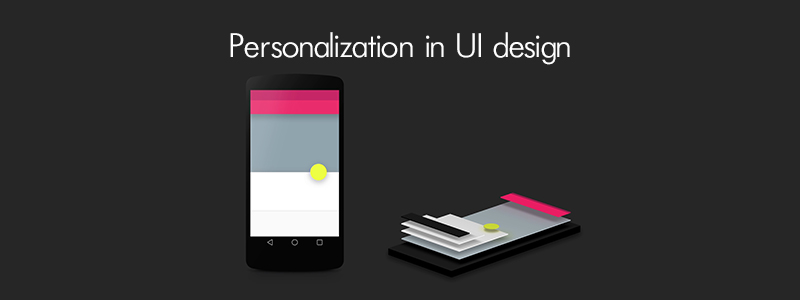Personalization and customization are two of the primary ways in which the user experience of your website can be controlled or enhanced. While customization allows the end-user of your website to control certain aspects of the user experience, personalization gives your website the opportunity to do so. As far as the role of personalization in UI is considered, it mainly serves to provide the end-user with the content and functionality that meets their needs in the best way possible and in the most effortless manner.
Why personalize your site? – because it equips your site with an improved user experience without your end-users having to make any extra efforts. This is because the system does all the work on their behalf.
Why not to personalize your site? – because it makes your website dependent on the computer’s ability to guess what your end-user precisely need. Additionally, some users may find the thought of their computer being able to guess about them so much, a bit unsettling.
How is a website personalized?
To personalize the experience of the end-user, a developer needs to set the system so that it can identify the targeted users and cater them with the relevant experience in terms of content and functionality.
There can be different levels of personalization, broadly classified as:
1) Personalization at group level/user role level
Once you classify your users into groups based on their location or role and the system is set-up to identify that role or location and delivers a user experience tailored for it, it is personalization at group level or the user role level. For example, in the intranets, the information is usually displayed based on their location and/or role of the end-user such as based on their job position.
2) Personalization at individual level
When you set your system to identify an individual and it is then able to delivered a user experience uniquely tailored to appeal to that user, it is personalization at individual level. So, for example, based on the past browsing and purchase history, the personalization can be performed at individual level.
Personalization v/s Customization
-
Personalization relies mainly on the system’s intelligence (artificial intelligence) which works great specially when your end-user has little idea about what they precisely need and what they need to filter out of your site. On the other hand, customization is based on the users’ intelligence (natural intelligence). This helps create a great user experience when the users are aware of their exact needs. So, while deciding on personalizing or customizing your website, the use case matters a great deal. And for personalization to work for your website, we need to ensure that the system’s intelligence is in tandem with the users’ needs.
-
Both personalization and customization serve to enhance the user’s experience on your website but these will be of no help if your end-user is already struggling to find relevant information on your website. So, the basic website structure, content and the work-flow of your website needs to be fixed first, before considering these enhancements to be implemented for your site.
-
While customization requires the end-user of your website to spend time on it to figure out how to get your website to provide them with the best possible experience while extracting the required information out of it, in case of personalization the system does this job.
Having understood in detail about personalization, we must now be aware that it only helps to take your website user experience to the next level, when the basic functionality and work-flow of your website works fine. So, both personalization and customization should be carefully used with clarity of the purpose and the use-case on your mind. Implementation of both the concepts require you to invest your time and effort to it and should be thoughtfully considered.


